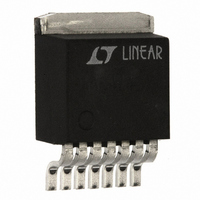LT1206CR Linear Technology, LT1206CR Datasheet - Page 9

LT1206CR
Manufacturer Part Number
LT1206CR
Description
IC CURRNT FEEDBCK AMP 250MA 7-DD
Manufacturer
Linear Technology
Datasheet
1.LT1206CN8PBF.pdf
(18 pages)
Specifications of LT1206CR
Amplifier Type
Current Feedback
Number Of Circuits
1
Slew Rate
900 V/µs
-3db Bandwidth
60MHz
Current - Input Bias
10µA
Voltage - Input Offset
3000µV
Current - Supply
20mA
Current - Output / Channel
1.2A
Voltage - Supply, Single/dual (±)
10 V ~ 30 V, ±5 V ~ 15 V
Operating Temperature
0°C ~ 70°C
Mounting Type
Surface Mount
Package / Case
TO-263-7, D²Pak (7 leads + Tab), TO-263CA
Lead Free Status / RoHS Status
Contains lead / RoHS non-compliant
Output Type
-
Gain Bandwidth Product
-
Available stocks
Company
Part Number
Manufacturer
Quantity
Price
Company:
Part Number:
LT1206CR#PBF
Manufacturer:
AD
Quantity:
979
Part Number:
LT1206CR#PBF
Manufacturer:
LINEAR/凌特
Quantity:
20 000
Part Number:
LT1206CR#TRPBF
Manufacturer:
LINEAR/凌特
Quantity:
20 000
Company:
Part Number:
LT1206CR/CT7
Manufacturer:
LT
Quantity:
5 510
Company:
Part Number:
LT1206CR/CT7
Manufacturer:
HITACHI
Quantity:
5 510
applicaTions inForMaTion
is flat to 0.35dB to 30MHz. The network has the greatest
effect for C
Maximum Capacitive Load vs Feedback Resistor can be
used to select the appropriate value of feedback resistor.
The values shown are for 0.5dB and 5dB peaking at a gain
of 2 with no resistive load. This is a worst case condition,
as the amplifier is more stable at higher gains and with
some resistive load in parallel with the capacitance. Also
shown is the – 3dB bandwidth with the suggested feedback
resistor vs the load capacitance.
Although the optional compensation works well with ca-
pacitive loads, it simply reduces the bandwidth when it is
connected with resistive loads. For instance, with a 30Ω
load, the bandwidth drops from 55MHz to 35MHz when
the compensation is connected. Hence, the compensation
was made optional. To disconnect the optional compensa-
tion, leave the COMP pin open.
Shutdown/Current Set
If the shutdown feature is not used, the SHUTDOWN pin
must be connected to ground or V
The shutdown pin can be used to either turn off the bias-
ing for the amplifier, reducing the quiescent current to
less than 200µA, or to control the quiescent current in
normal operation.
The total bias current in the LT1206 is controlled by the cur-
rent flowing out of the shutdown pin. When the shutdown
pin is open or driven to the positive supply, the part is shut
down. In the shutdown mode, the output looks like a 40pF
–2
–4
–6
–8
12
10
L
8
6
4
2
0
1
in the range of 0pF to 1000pF . The graph of
V
S
= ±15V
NO COMPENSATION
COMPENSATION
FREQUENCY (MHz)
R
F
R
Figure 1
F
= 1.2k
COMPENSATION
= 2k
10
R
F
= 2k
–
.
1206 F01
100
capacitor and the supply current is typically 100µA. The
shutdown pin is referenced to the positive supply through
an internal bias circuit (see the simplified schematic). An
easy way to force shutdown is to use open drain (collec-
tor) logic. The circuit shown in Figure 2 uses a 74C904
buffer to interface between 5V logic and the LT1206. The
switching time between the active and shutdown states
is less than 1µs. A 24k pull-up resistor speeds up the
turn-off time and insures that the LT1206 is completely
turned off. Because the pin is referenced to the positive
supply, the logic used should have a breakdown voltage
of greater than the positive supply voltage. No other
circuitry is necessary as the internal circuit limits the
shutdown pin current to about 500µA. Figure 3 shows
the resulting waveforms.
ENABLE
V
OUT
A
R
R
R
V
V
IN
F
L
PU
ENABLE
= 1
= 825Ω
= 50Ω
= 1V
= 24k
P-P
Figure 3. Shutdown Operation
Figure 2. Shutdown Interface
V
5V
IN
74C906
+
–
LT1206
S/D
1µs/DIV
–15V
15V
15V
24k
1206 F02
R
R
F
G
LT1206
V
OUT
1206 F03
1206fb
9













